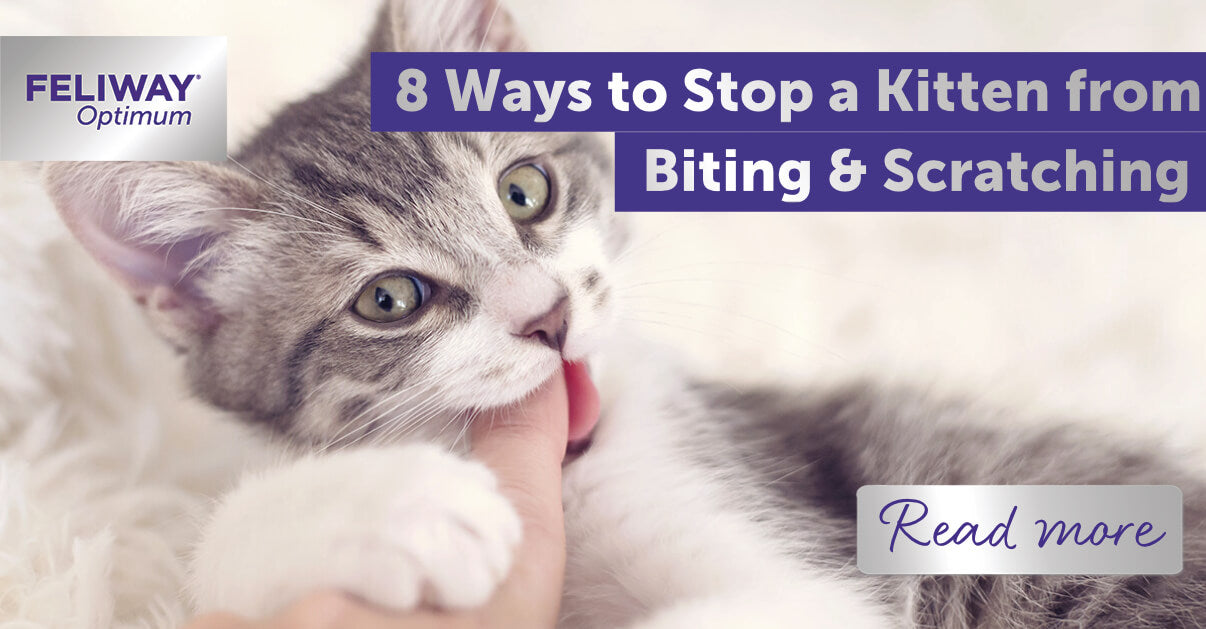To stop a cat from biting, redirect its attention to toys or scratching posts and avoid using hands or feet as play objects. Getting a cat to stop biting can be challenging, especially when it becomes a habitual behavior.
However, with some patience and consistent training, it is possible to break this habit and foster a more peaceful relationship with your furry companion. Biting commonly occurs when cats engage in play or when they feel threatened or overstimulated. It is important to redirect their attention to appropriate toys or scratching posts and avoid using hands or feet as play objects.
By providing alternative outlets for their energy and teaching them appropriate boundaries, you can help your cat learn to curb its biting behavior.
Understanding Cat Biting Behavior
Understanding why cats bite is essential in order to address this behavior effectively. Cats may bite for different reasons, including play, fear, and territoriality. Play biting is common in kittens, as they learn to control their bite strength and interact with their environment.
Fear biting occurs when a cat feels threatened or scared, and they may resort to biting as a way to defend themselves. Territorial biting happens when a cat feels that their space is being invaded or threatened. By understanding the underlying causes of biting, pet owners can employ appropriate strategies to discourage this behavior.
It is important to provide cats with appropriate outlets for play, establish a calm and safe environment, and gradually introduce them to new situations to minimize fear or territorial responses. With patience, consistency, and gentle guidance, cat biting can be effectively prevented or resolved.

Credit: www.pampers.com
Teaching Bite Inhibition
Teaching bite inhibition is crucial in preventing cats from biting. It involves training them to control the force of their bites. Bite inhibition is an important skill for cats to have, as it allows them to interact with humans and other animals without causing harm.
To teach bite inhibition, follow a step-by-step guide. Start by using toys and interactive play to redirect their behavior. It’s also important to set boundaries and establish rules, consistently reinforcing them. Positive reinforcement and rewards are effective in encouraging good behavior.
By teaching bite inhibition, you can ensure a safe and enjoyable relationship with your cat.
Identifying Triggers And Addressing Aggression
Cats biting can be a frustrating issue for pet owners. Identifying the triggers behind their aggression is crucial. Some common triggers include petting-induced aggression, overstimulation, fear, and anxiety. To address these issues, gradual desensitization and behavior modification techniques can be effective.
Seeking consultation with a professional behaviorist is also advisable. By slowly exposing the cat to the triggers in a controlled environment, they can learn to respond differently. Modifying their behavior requires consistency and patience. Professional guidance can provide valuable insights and tailored strategies to tackle the biting problem.
With the right approach, owners can create a safe and harmonious environment for their cats, free from unwanted biting behaviors.
Reducing Play Biting
Playing with cats is an essential part of their behavior. To reduce play biting, redirect their attention towards appropriate toys and games. It’s crucial to avoid engaging in rough play behaviors that can encourage biting. Establishing set playtime routines can help cats understand when playtime begins and ends.
By following these guidelines, cat owners can effectively discourage biting behavior and foster a healthy play environment for their furry friends.
Managing Fear Biting
Fear biting in cats can manifest through various signs, such as hissing, growling, or attempting to escape. To address this behavior, create a safe and secure environment that minimizes potential triggers. Use positive reinforcement and desensitization techniques to gradually expose the cat to its fear-inducing stimuli.
Reward-based training can also help redirect their attention and discourage biting. Counter-conditioning can be employed by associating the fear triggers with positive experiences, gradually reducing the cat’s negative responses. By following these steps, cat owners can effectively manage fear biting and foster a harmonious bond with their feline companions.
Dealing With Territorial Biting
Cats can exhibit territorial behavior, which may result in biting. To create a harmonious multi-cat household, it is important to understand this behavior. Providing separate resources and spaces for each cat helps reduce conflict. When introducing cats, it is best to do it slowly and positively, allowing them to get used to each other’s scents and presence.
In severe cases, seeking professional guidance can provide valuable insight and solutions. Remember that cats are individuals with their own personalities, so patience and understanding are key. By following these guidelines, you can effectively address and manage territorial biting in cats.
Ensuring A Healthy Cat
Cats biting can be discouraged by ensuring their overall health through regular veterinary check-ups. A balanced diet and exercise routine are crucial for maintaining their wellbeing. Any medical issues that may contribute to biting behavior should be monitored and addressed promptly.
Regular visits to the vet help identify underlying health conditions and offer appropriate treatments. Proper nutrition and engaging physical activities keep a cat’s mind and body active, reducing the likelihood of biting incidents. By prioritizing their health, cat owners can create a safe and comfortable environment for their feline companions.
Regular vet check-ups are the keys to preventing biting and promoting a happy, healthy cat.
Frequently Asked Questions For How To Get A Cat To Stop Biting
How Do I Stop My Cat From Biting?
To stop your cat from biting, try redirecting its behavior with toys or treats. Additionally, avoid playing with your hands or feet to discourage biting. Provide plenty of mental and physical stimulation to keep your cat happy and prevent boredom, which can lead to biting.
Conclusion
Getting a cat to stop biting can be a challenge, but with the right approach and patience, it is possible to curb this behavior. Consistency is key when training your cat, using positive reinforcement techniques to reward good behavior and redirecting them when they display biting tendencies.
Avoid physical punishment or reacting with aggression, as this will only escalate the problem. Providing appropriate toys and outlets for their energy can also help to prevent biting out of boredom or frustration. Understanding the underlying reasons for biting, such as fear or overstimulation, can also be beneficial in addressing the issue.
Remember, every cat is unique, so what may work for one may not work for another. By staying attentive, committed, and utilizing these tips, you can help your cat overcome their biting habit and foster a harmonious relationship between you both.



